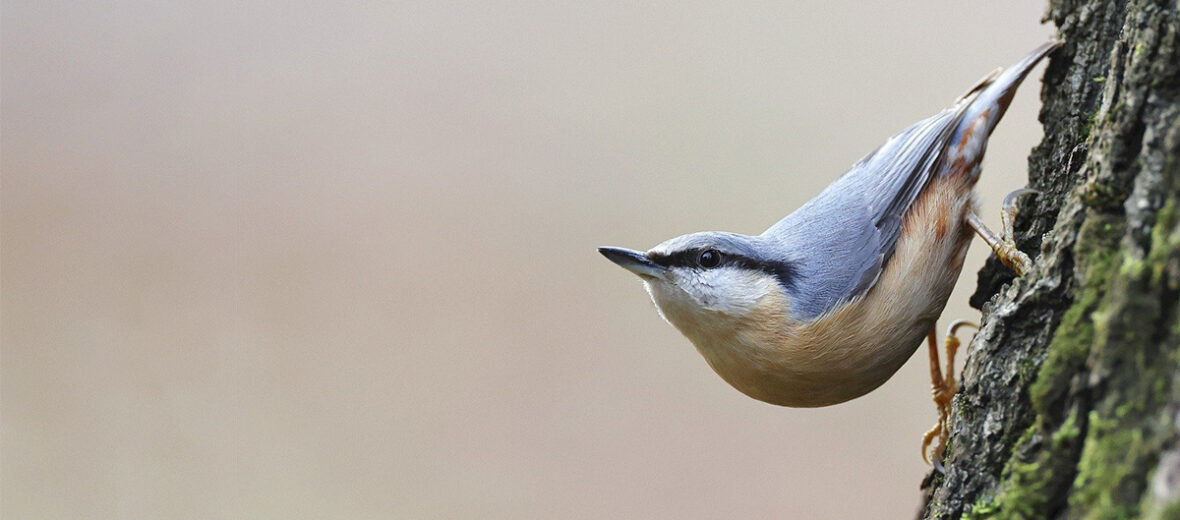
The Eurasian nuthatch, aka wood nuthatch, is an abundant species of passerine (songbird or perching) bird that can be found from Europe to Africa, and throughout Asia. As mentioned, these birds are abundant as is evident by their estimated population of around 500,000,000 wild individuals! The only threats these birds face are habitat destruction and fragmentation. The IUCN lists these birds as Least Concern, and their populations are listed as stable.
First the Stats…
Scientific name: Sitta europaea
Weight: Up to 1 ounce
Length: Up to 5.5 inches
Wingspan: Up to 10.6 inches
Lifespan: Up to 10 years
Now on to the Facts!
1.) They search for their preferred food of beetles and caterpillars in trees, sometimes even hanging upside down to feed. These birds also feast on beech mast, hazelnuts, and various seeds.
2.) In winter, Eurasian nuthatches frequent bird feeders.
3.) Eurasian nuthatches can be found individually or in mated monogamous (mate for life) pairs.
4.) These birds prefer, almost exclusively, forests with larger, old-growth trees.
5.) The Eurasian nuthatch is known for caching seeds in the bark of trees and in cracks and crevices of walls; as well as in the ground. They will then hide their cache of food with bark, moss, or lichen.
But wait, there’s more on the Eurasian nuthatch!
6.) They are vocal birds that produce a loud “dwip” call, repeated twice in succession when excited. There are other calls produced as well, such as a “sirrrr”, “tsi-si-si”, a preflight “tsit” call, and a “pee-pee-pee” call.
7.) Males sing both to signal territory and to woo a potential life partner.
Did you know…?
The Eurasian nuthatch can fly at speeds of up to 13 mph.
8.) Their courtship displays consist of a floating and quivering flight. The male will also engage in circular flight patterns with a spread out tail and a raised head. He will also bring offerings of food to his partner.
9.) Nests are reused each year and are usually about up to 60+ feet off the ground.
10.) Females can lay upwards of 13 eggs that hatch in up to 18 days.
But wait, there’s still more on the Eurasian nuthatch!
11.) Chicks fledge in up to 26 days, and are independent in up to 14 days after that.
12.) Their predators include the likes of Eurasian sparrowhawks, northern goshawks, tawny owls, pygmy owls, and least weasels.
Now a Short Eurasian Nuthatch Video!
This video is courtesy of my friend at Avibirds.com
Be sure to share & comment below! Also, check out the Critter Science YouTube channel. Videos added regularly!
Want to suggest a critter for me to write about? Let me know here.
Some source material acquired from: Wikipedia & IUCN



